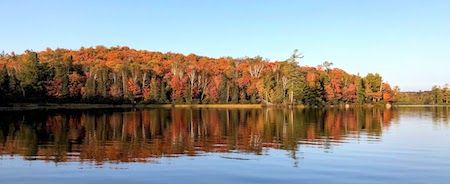
Digital Photography
Overall Goal
This program will stir student's curiosity by taking digital photographs in the natural environment. The students will be encouraged to consider lighting, subject of interest, perspective, scale and framing when arranging their photographic composition. They will develop the skills, strategies and habits of mind required for scientific inquiry and technological problem solving.
By getting off trails and into the woods students are encouraged to look more closely at what’s around them, to wonder, to ask questions and to make connections to the natural world.
Grade 6 Curriculum Connections
Science and technology - Understanding life systems - Biodiversity
- assess human impacts on biodiversity, and identify ways of preserving biodiversity
- investigate the characteristics of living things, and classify diverse organisms according to specific characteristic
- demonstrate an understanding of biodiversity, its contributions to the stability of natural systems, and it benefits to humans
- Connect to STEM and Big Ideas (Fairness & Equity, Systems, Community, Diversity, Interdependence, Ability to Make a Difference, Equilibrium)
The Arts - Visual Arts
- Creating and Presenting: apply the creative process to produce art works in a variety of traditional two- and three-dimensional forms, as well as multimedia art works, that communicate feelings, ideas, and understandings, using elements, principles, and techniques of visual arts as well as current media technologies
- Reflecting, Responding, and Analysing: apply the critical analysis process to communicate feelings, ideas, and understandings in response to a variety of art works and art experiences;
Program Description
The focus will vary depending on which of the themes have been chosen for the visit. It could for example focus on photography as art, on biodiversity, or on human impact on the environment. An inquiry project could lead the program in a variety of directions.
On a hike, visit a variety of ecosystems to allow students time to capture a variety of photographs that will incorporate the elements and principles of design. These six elements of design will be explored: texture, line, shape and form, colour, value, and space. Balance as a key principle of design will be probed. Various photographic terms such as: the rule of thirds, scale, perspective, light, subject of interest and frame boundaries will be raised for consideration. Students will work either with a partner or alone.
Success Criteria/Learning Goals
- Students will be able to define the 6 elements of design.
- Students will be able to explain the principle of balance in photographs.
- Students will create artist statements for at least three photos taken.
Pre-Trip Activity
Have the students write a journal entry about their thoughts about photography, their experiences to date, and what they think makes a good photograph. This can be followed up after the trip to reflect on any changes to their thoughts and feelings.
Next Step Environmental Action
- Create a photo montage that highlights human impacts on the environment both positive and negative.
- Create a photo essay that tells a story of environmental racism
- Start a campaign to affect some change based on the results
Resources
This is an article that reviews "What Makes a Photograph Good."
For more resources please see Learning Resources on our website under Biodiversity.
This activity can be done in any season and almost any weather